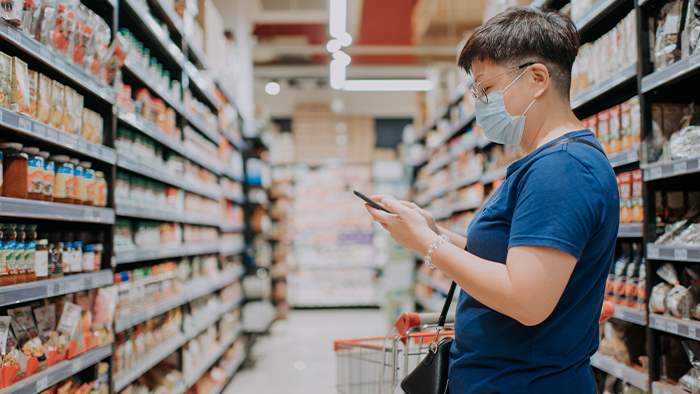Changing retail for the evolving consumer
Accenture: retail changes shaped by pandemic here to stay
- By [ Jill Standish ]
- 08/24/2020
COVID-19 has profoundly altered the way we live, work, connect and consume. Shifts that were expected to take years have been accelerated suddenly and massively. US ecommerce, for example, has seen ten years of growth in a matter of months. And there’s been a major uptick in how retailers collaborate with partners in other industries to provide new consumer experiences.
The key questions confronting retailers: how much of this new consumer behavior sticks and what does that mean for their businesses from now on? To find out, Accenture has been monitoring the evolving patterns of consumer thinking throughout the crisis, highlighting new habits and preferences in what we value and how we shop.
Shifting values
So what can we say about today’s consumers? With both the epidemiological and the economic outlook highly uncertain, they’re understandably focusing on their health, safety and finances. Confidence is still low, and the research shows a significant proportion of people aren’t yet comfortable returning to public places, including both essential and non-essential retail stores. Retail footfall remains below pre-COVID-19 levels in nearly all markets.
Consumers also have high expectations that businesses will act responsibly, taking decisions that benefit the common good, not just the bottom line. Retailers must be aware of this, showing they understand that people have very different needs right now. This is a time to prioritize initiatives that build trust, working with partners to develop new and more responsible ways of working. Consumers will notice how businesses respond.
There’s no place like home
One obvious consequence of the pandemic is that the home has become the heart of the consumer and social experience. By necessity, digital shopping has surged. Ecommerce purchases are expected to grow by 169 percent among new or low-frequency digital shoppers. And we’ve all become increasingly used to virtual socializing too (the research shows it’s become more prevalent across all age groups). Many of us have also seized the opportunity to take up new hobbies and build skills in areas like cooking, baking and gardening.
Retailers must accept that at-home and virtual commerce is the reality for the medium term. And, clearly, digital retail experiences need to be as differentiated as possible. But there are opportunities for creative thinking here too, such as serving home-based social occasions and newfound consumer hobbies and passions with new products and services. That might mean collaborating with other industries to bring together products, content, engagement and digital technology.
Shopping on a smaller scale
The pandemic has been an anxious and challenging time. It has also been a chance to pause, reflect, reconsider our values and rethink how we consume. One consequence of this is a growing trend for local shopping. The research suggests there are multiple factors behind this, including a desire to support neighborhood stores at risk of closure, as well as a preference for more cost-conscious and sustainable consumption.

In for the long haul
One conclusion is unavoidable: what’s happening now will define retail for the next decade. Many of the new behaviors we’re seeing are permanent. So it will be those retailers that can use their data to understand consumer needs, adapt quickly, act responsibly, think locally—and communicate all this effectively—that will thrive in the post-pandemic world.
Source: Accenture COVID-19 Consumer Pulse Research (conducted every two weeks from March 2020 to July 2020)
Tags
-
Technology & Innovation


